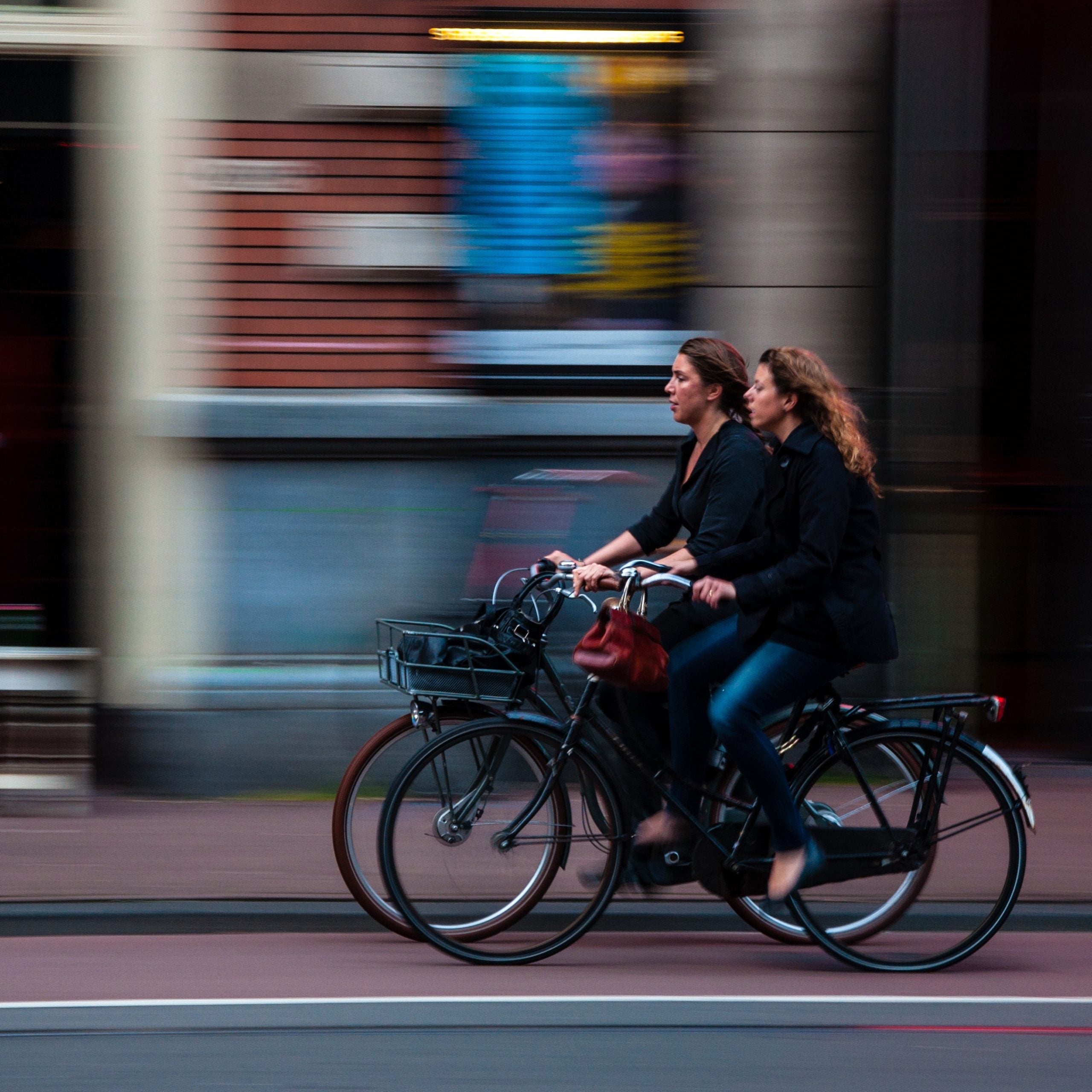If you live in the U.S., you’ve surely heard an oral history of naughty cyclists. There’s a widely held perspective that city and suburban streets are overrun with lawbreaking riders—a swarm of oblivious, entitled cyclists rolling red lights, blasting through stop signs, slaloming down one-way streets, then (hypocritically!) flipping off drivers.
As someone who has driven hundreds of thousands of miles over the past 34 years, and ridden a bike for even longer, my point of view is different. Everyone seems to break the rules, whether they’re on two wheels or four. The big difference is that some do it on an 18-pound bicycle and some do it in a 4,000-pound SUV that can cause exponentially greater harm.
But people who don't bike don’t see it that way—they just see people on bikes charging through those stop signs. And it’s nearly impossible to combat their perceptions or even engage in meaningful debate without hard evidence of a different reality. And to date, very little research has produced quantifiable data comparing how drivers and cyclists actually behave on the road.
That’s why —commissioned by the Florida Department of Transportation and conducted by scientists at the University of South Florida’s Center for Urban Transportation Research—is so damn interesting. The report, the largest of its kind ever attempted, concluded that cyclists were slightly more compliant with traffic laws than drivers.
Conducting what’s known as a naturalistic behavior study, the researchers outfitted the bikes of 100 cyclists with multiple sensors and cameras, then recorded data as those participants went about their normal riding lives, pedaling roughly 2,000 hours in the Tampa Bay metro area. After the test period ended, the researchers and their grad students scrutinized the video footage and sensor data, tabulating how often cyclists and drivers failed to yield, rolled through stop signs, or otherwise broke the rules of the road. They paid special attention to instances in which a crash or a close call occurred.
In the end, the results indicated that cyclists were compliant with the law 88 percent of the time during the day and 87 percent of the time after dark. The same study determined that drivers who interacted with the study subjects complied with the law 85 percent of the time. In other words, drivers were slightly naughtier than the cyclists—even without measuring speeding or distracted driving.
In a conversation with three of the researchers who conducted the study, I asked if they had any insight into why the findings vary so significantly from public perceptions about scofflaw cyclist behavior. “Many drivers simply don’t know the rules that concern people on bikes,” says Cong Chen. “About how much space to give cyclists, for instance, or when riders should get the right of way.”
Even more damning, 20 of the 21 close calls that were recorded involved a driver who failed to yield properly while turning, or didn’t give a cyclist the three feet of space mandated by Florida law. “The bikes were equipped with proximity sensors,” says research associate Achilleas Kourtellis. “So we could measure exactly how close the cars got to the cyclists. Some of them were really close calls.” (In the only exception, a cyclist had a near-miss after crossing a street while a “Do Not Walk” pedestrian signal was blinking.)
“Even though the cyclists in close calls were almost always compliant with traffic rules, there still were instances where they could have been more cautious,” observes Program Director Pei-Sung Lin, who led the study. “I mean, it’s obviously not foolproof to assume drivers will follow the rules.”
There was only one crash during the study period, and that too was caused by a negligent driver. In that case, a motorist rear-ended a cyclist as she waited to make a left turn. In the published study, researchers noted, “The driver was impatient and tried to pass at a relatively high speed since the oncoming traffic was about to stop for the bicyclist to turn.”
“Based on what we saw and measured, we recommend measures that promote separating more than sharing. We think creating buffers between cars and bikes is smart.”
In another component of the same research project, participants were asked to complete a detailed questionnaire about their cycling behavior. The goal was to examine how cyclists describe their own behavior on the road—how and when they might take risks, for instance, and what kinds of situations might distract them while they ride.
The resulting data was largely unsurprising with one big exception: these self-evaluations revealed that young riders (between the ages of 18 to 25) took more risks and were more frequently distracted than older cyclists. And riders who had completed formal rider-training courses (from the organization ) were even more compliant with regards to traffic laws.
Another interesting point: Female cyclists who completed the self-assessment rated themselves as greater risk takers and as more frequently distracted than their male counterparts. The study authors acknowledge that this data is counterintuitive, as numerous studies have documented the higher likelihood of risk-taking behaviors in young men, but speculate that women may more honestly assess their behavior or attribute more risk to a given action than men.
In any case, based on the study findings, the researchers offered a number of recommendations to help mitigate the frighteningly high rate of close calls. For infrastructure improvements, they suggested wider and protected bike lanes; reflective green markings on bike lanes; improved lighting on roadways that see significant bicycle traffic; and so-called “through lanes,” which reduce conflicts between bicyclists and turning vehicles at intersections by letting riders be safely positioned before cars turn. “Based on what we saw and measured, we recommend measures that promote separating more than sharing,” says Kourtellis. “We think creating buffers between cars and bikes is smart.”
It's evident something needs to change to keep riders safe, at least in the area where the study took place. The two counties included in the report saw a total of 1,084 bicycle crashes and 22 fatalities in 2013. And as the study notes, cyclist fatality rates in Florida are three times the national average. According to the Florida Department of Highway Safety and Motor Vehicles, a total of 7,077 bicycle crashes in 2014 left 135 cyclists dead and another 6,680 injured—78 percent more fatalities than in 2011.
“There’s no doubt there’s a problem with safety here in Florida,” says Kourtellis. “That’s why the DOT asked us to do this study—to help figure out what we can do to change people’s behaviors. There are too many people getting hurt.”


